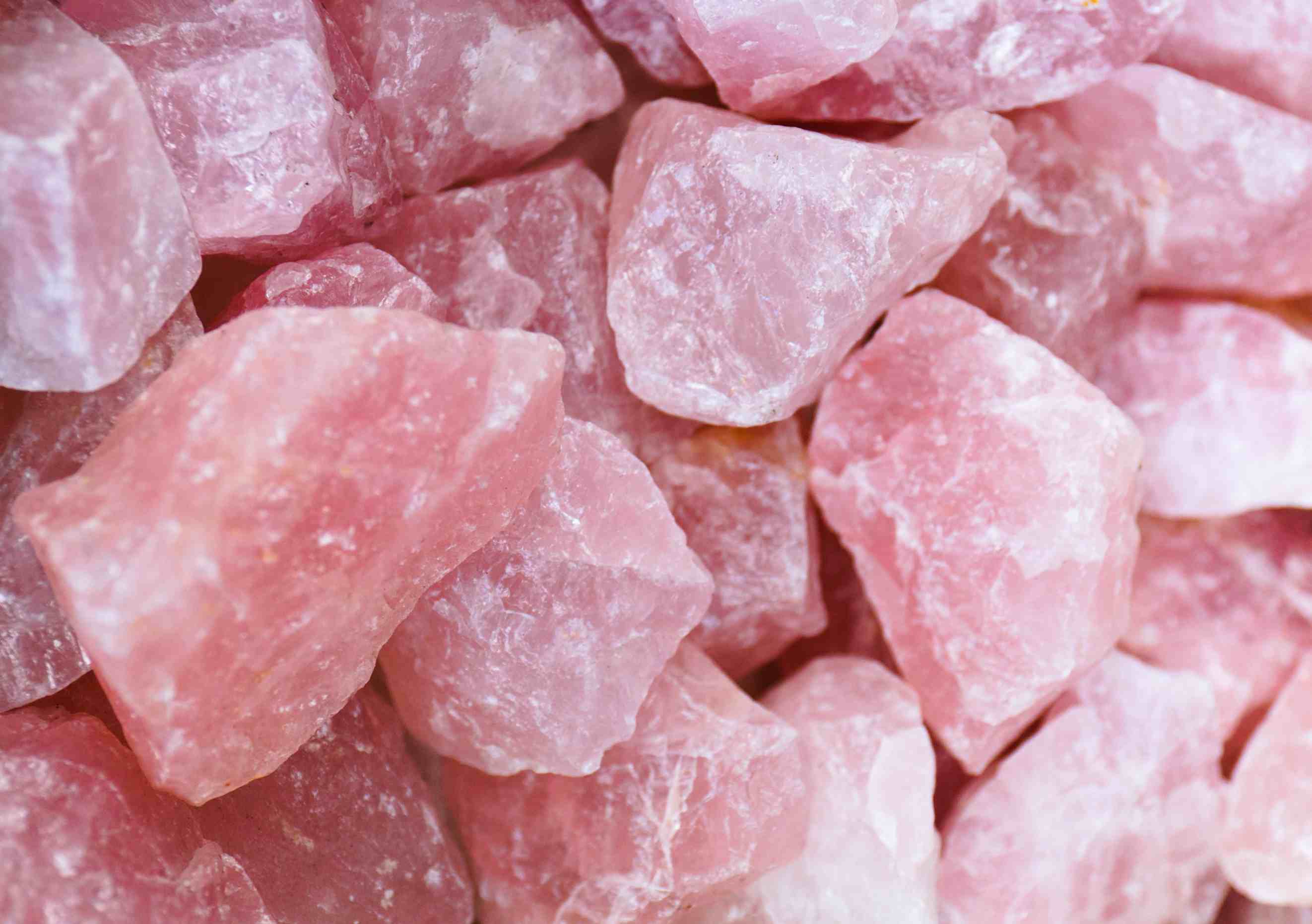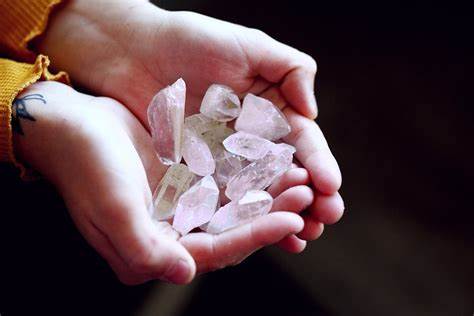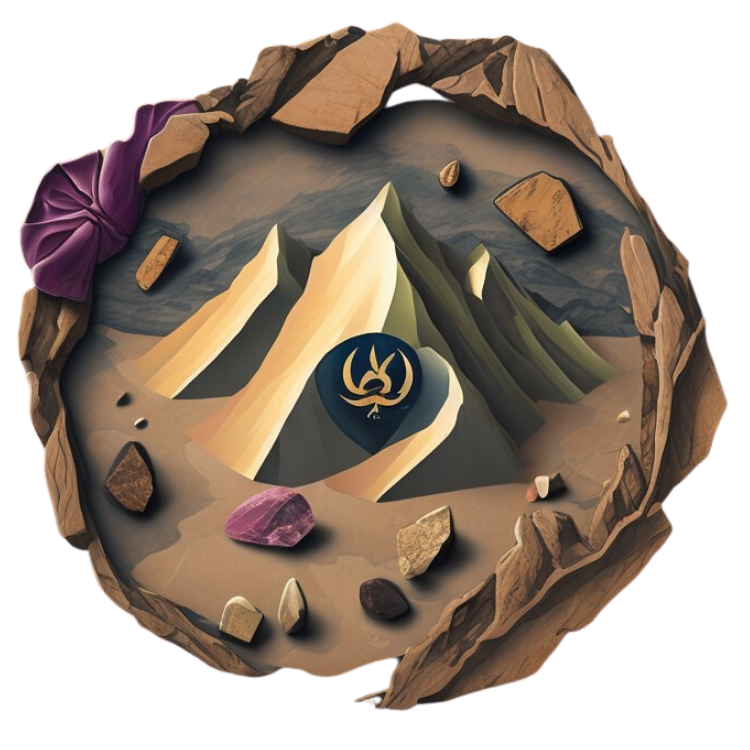Rose Quartz: Tips for Collectors and Buyers
Click here to see our crystal hunting maps
Rose quartz is a popular variety of quartz distinguished by its pink hue. This semi-precious gemstone belongs to the silica mineral class and is composed primarily of silicon dioxide (SiO₂). The pink color of rose quartz ranges from very pale pink to deep reddish-pink and is due to trace amounts of titanium, iron, or manganese. Its color is typically uniform, though it can sometimes display a cloudiness or asterism (star-like patterns) due to microscopic inclusions.
Its appeal extends beyond its beauty; it's a stone steeped in history, imbued with meaning, and revered for its purported metaphysical properties. This comprehensive guide will delve into the many facets of rose quartz, providing valuable insights for both collectors and curious enthusiasts.
Historical and Cultural Significance of Rose Quartz
Rose quartz has been used throughout history for its beauty and purported healing properties. Ancient civilizations, including the Egyptians, Greeks, and Romans, utilized rose quartz in jewelry and talismans, believing it could prevent aging and ward off evil. In the Middle Ages, it was often used in love rituals and potions. Today, rose quartz is associated with unconditional love, compassion, and healing, making it a popular stone in metaphysical circles.
Physical Properties of Rose Quartz
Rose Quartz Appearance
- Color: The color of rose quartz ranges from pale pink to deep reddish pink. High-quality specimens have a strong, vivid color, while lower-quality stones may appear washed out.
- Transparency: Rose quartz can be transparent to translucent. Transparent specimens are rarer and thus are more valued.
- Luster: The luster of rose quartz is typically vitreous, meaning it has a glassy appearance. It can also exhibit a milky or cloudy appearance due to internal inclusions.
Rose Quartz Characteristics
- Hardness: Rose quartz has a hardness of 7 on the Mohs scale, making it a durable stone suitable for jewelry and resistant to scratching.
- Durability: Despite its hardness, rose quartz can be prone to chipping and cracking, especially if struck with force. While rose quartz is not as hard as gemstones like diamond or sapphire, it is still quite durable and can be used in jewelry and carvings.
- Inclusions and Patterns: Common inclusions in rose quartz include rutile needles, which can create asterism (star effect) when cut en cabochon.
Varieties of Rose Quartz
Rose quartz primarily comes in two varieties:
- Massive Rose Quartz: This variety is more common and is found in large, opaque chunks. It is often used for carvings, tumbled stones, and beads.
- Crystalline Rose Quartz: This rarer variety occurs in well-formed crystals and is highly prized by collectors. These crystals are usually transparent or translucent.
Other varieties of rose quartz are;
- Star Rose Quartz: A rare variety that exhibits asterism (a star-like pattern) when cut en cabochon (with a rounded top).
- Rose Quartz with Rutile: Occasionally, rose quartz contains golden rutile needles, adding a unique visual element.
RELATED TOPICS: The Diverse World of Quartz Gemstones: An In-Depth Exploration
Common Uses of Rose Quartz

- Jewelry: Rose quartz is widely used in jewelry, including rings, necklaces, bracelets, and earrings. Its soothing color and affordability make it a favorite among designers and buyers alike.
- Decorative Items: Rose quartz is also used for making decorative items such as carved figurines, spheres, and obelisks. Its calming presence makes it a popular choice for home décor.
- Metaphysical Tools: In the realm of crystal healing, rose quartz is renowned for its emotional healing properties. It is often used in meditation, energy healing, and as a talisman for attracting love and harmony.
Tips for Buyers
Identifying Authentic Rose Quartz
- Visual Inspection:
- Color: Look for a consistent pink color. Authentic rose quartz should not have an overly vibrant or neon-like appearance.
- Transparency and Inclusions: Authentic rose quartz can range from transparent to translucent and may have rutile inclusions that create a star effect.
- Scratch Test: Performing a scratch test can help verify the hardness of the stone. Genuine rose quartz should not scratch easily. If it does, it may be a softer material like glass or plastic.
- UV Light Test: Authentic rose quartz will fluoresce under ultraviolet light, emitting a faint to moderate pinkish glow. This can be a useful test for identifying dyed quartz or other imitations.
Common Imitations of Rose Quartz and How to Spot Them
- Dyed Quartz:
- Color Intensity: Dyed quartz often has an unnaturally intense or uniform color. Inspect the stone for areas where the dye may have concentrated.
- UV Light Test: Dyed quartz typically does not fluoresce under UV light.
- Glass:
- Bubbles and Swirls: Glass imitations often have tiny bubbles or swirl marks. Inspect the stone closely with a magnifying glass.
- Temperature: Glass tends to feel warmer to the touch compared to natural rose quartz.
- Plastic:
- Weight: Plastic imitations are significantly lighter than authentic rose quartz.
- Scratch Test: Plastic can be easily scratched with a metal object, unlike genuine rose quartz.
- Composite Stones:
- Seams and Glue Marks: Composite stones may show seams or glue marks where different pieces have been bonded together.
How to Spot Them:
- Scratch Test: Authentic rose quartz will scratch glass, while glass and plastic imitations will not.
- Warmth Test: Real rose quartz will remain cool to the touch, while glass or plastic imitations may warm up quickly.
- Magnification: Examine the stone under magnification to look for natural inclusions, bubbles (which indicate glass), or mold lines (which indicate plastic).
Where to Buy
Reputable Jewelers
Purchasing from reputable jewelers or gemstone dealers is crucial. Look for sellers who provide detailed information about the stone's origin and properties.
Online Marketplaces
When buying online, choose platforms with robust return policies and seller verification systems like our shop.rockhounding.org. Read reviews and check the seller's ratings before making a purchase.
Gem Shows and Mineral Expos
Gem shows and mineral expos are excellent places to buy rose quartz. They offer the opportunity to inspect the stones in person and often provide access to knowledgeable vendors.
Pricing and Value
The price of rose quartz varies based on factors such as color, clarity, and size.
- Color: Deeper, more vibrant pinks are generally more valuable.
- Transparency: Transparent richly colored rose quartz is more sought after than translucent or opaque specimens. Crystalline rose quartz commands higher prices than the more common massive variety.
- Size: Larger, high-quality pieces command higher prices.
- Cut and Polish: Well-cut and polished stones are more valuable than rough or poorly finished ones.
Tips for Collecting Rose Quartz
1. Building a Collection
- Focus on Quality: Prioritize high-quality specimens with good color and clarity.
- Diversity: Aim to collect different varieties and forms, such as rough stones, polished pieces, and carvings.
- Documentation: Keep records of each piece, including details about its origin, purchase price, and any notable characteristics.
2. Display and Use
- Showcases: Use glass showcases to protect and display your collection.
- Lighting: Proper lighting can enhance the appearance of rose quartz. LED lights with adjustable brightness are ideal.
- Rotation: Periodically rotate the display pieces to prevent prolonged exposure to light, which can fade the color.
RELATED TOPIC:Collecting Amethyst: Exploring Its Meaning, Uses and Properties
Caring for Rose Quartz

Cleaning Rose Quartz
- Mild Soap and Water: Clean rose quartz with mild soap and lukewarm water. Avoid harsh chemicals that can damage the stone.
- Soft Brush: Use a soft brush to remove dirt and debris, especially from intricate carvings or settings.
- Avoid Ultrasonic Cleaners: Ultrasonic cleaners can cause internal fractures in rose quartz. Stick to gentle cleaning methods.
Storing Rose Quartz
- Separate Storage: Store rose quartz separately from harder gemstones to avoid scratches.
- Padded Containers: Use padded containers or cloth pouches to protect the stones from impact and abrasion.
Ethical and Sustainable Sourcing
Ethical Concerns in Rose Quartz Mining
Rose quartz mining can have significant environmental and social impacts. Unregulated mining practices can lead to habitat destruction and worker exploitation. It's essential to consider the ethical implications of gemstone sourcing.
Sustainable Rose Quartz
- Certified Mines: Look for rose quartz sourced from certified mines that adhere to sustainable and ethical practices.
- Transparency: Choose sellers who provide transparent information about the sourcing and mining practices of their stones.
Locations and Sites for Rose Quartz Mining Globally
- Brazil: Brazil is one of the most significant sources of high-quality rose quartz. The Minas Gerais region is particularly renowned for its abundant deposits of richly colored and transparent rose quartz. The country's vast geological diversity makes it a prime location for various quartz varieties.
- Madagascar: Madagascar is known for producing some of the world's finest rose quartz. The stones from this region are often characterized by their vivid pink color and excellent clarity. Major mining areas include the regions around Antsirabe and Tamatave.
- South Dakota, USA: The Black Hills region in South Dakota is a notable source of rose quartz in the United States. The rose quartz found here is often massive and opaque, commonly used for carvings and decorative items.
- India: India, particularly the regions of Karnataka and Tamil Nadu, is known for producing large quantities of rose quartz. Indian rose quartz is often used in jewelry and decorative carvings.
- Namibia: Namibia's Erongo region is another important source of rose quartz. The stones from this area are known for their beautiful color and quality, contributing significantly to the global market.
- Sri Lanka: Sri Lanka has been a source of rose quartz for centuries, particularly in the Ratnapura district. The stones from this region are prized for their deep color and clarity, making them highly desirable for jewelry.
- Germany: In Germany, the Black Forest region has historical significance for rose quartz mining. While not as abundant as other locations, German rose quartz is appreciated for its unique color variations and historical value.
Conclusion
Rose quartz is a beautiful and versatile gemstone cherished for its aesthetic appeal and healing properties. Whether you are a collector, buyer, or enthusiast, understanding how to identify, buy, and care for rose quartz is crucial. By following the tips outlined in this guide, you can ensure that you acquire authentic, high-quality rose quartz and contribute to sustainable and ethical gemstone practices.
